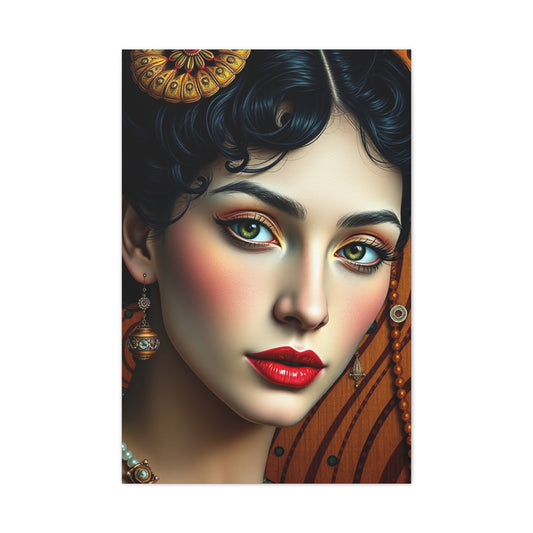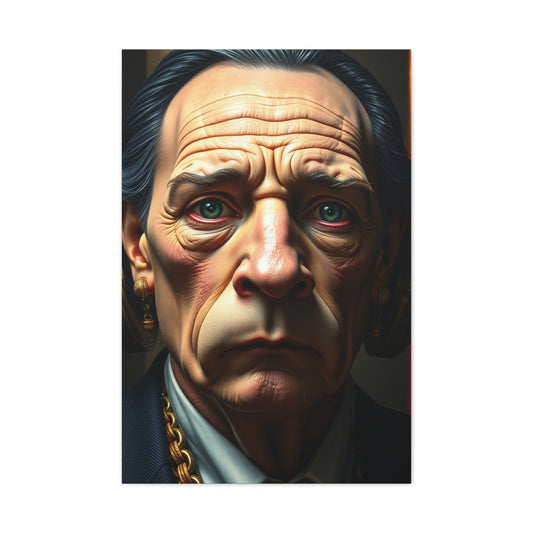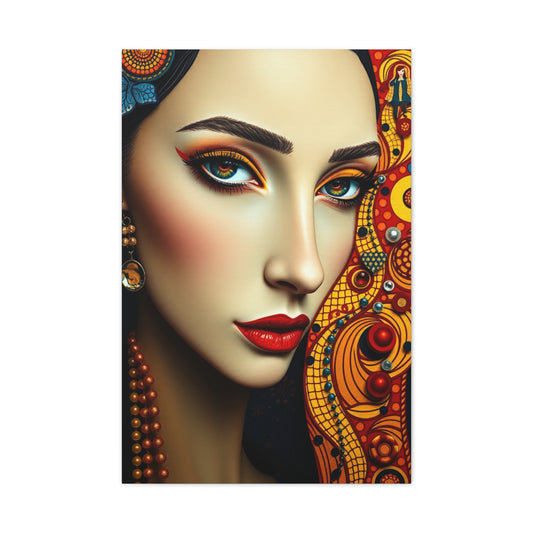Grey residential interiors represent sophisticated design choices that provide versatile foundations for creative chromatic experimentation while maintaining timeless aesthetic appeal throughout evolving style trends. However, monochromatic grey schemes occasionally require strategic color injections to prevent monotonous visual experiences and create dynamic spatial characteristics that enhance both functionality and emotional resonance.
The fundamental challenge in grey interior enhancement involves selecting complementary accent colors that amplify rather than compete with existing neutral foundations. Successful color coordination requires understanding undertones within grey palettes, spatial lighting conditions, and desired atmospheric outcomes that influence inhabitant mood and social interaction patterns throughout residential environments.
Contemporary interior design emphasizes the psychological impact of color relationships, recognizing that strategic accent wall implementations can dramatically transform spatial perception, create focal points that guide visual attention, and establish emotional connections between occupants and their living environments. These chromatic interventions serve functional purposes beyond mere aesthetic enhancement, influencing productivity, relaxation, and social interaction within residential spaces.
Grey's inherent versatility stems from its neutral characteristics that accommodate diverse color partnerships while maintaining sophisticated appearances suitable for professional and personal environments. This adaptability makes grey an ideal foundation color for homeowners seeking flexible design solutions that evolve with changing preferences, seasonal adjustments, and lifestyle modifications without requiring complete interior overhauls.
Professional color theory recognizes grey as an achromatic neutral that exists between black and white extremes, possessing subtle undertones that influence compatibility with various chromatic partners. Warm greys containing beige or taupe undertones harmonize with different color families than cool greys featuring blue or green undertones, requiring careful analysis before selecting accent colors that achieve desired aesthetic outcomes.
Lighting conditions significantly impact color perception within grey interiors, with natural daylight revealing true color relationships while artificial illumination can shift chromatic appearances throughout daily cycles. Northern exposures tend to emphasize cool undertones while southern orientations enhance warm characteristics, necessitating lighting consideration during accent color selection processes.
Spatial proportions influence accent wall effectiveness, with larger rooms accommodating bolder color choices while smaller spaces benefit from subtle chromatic enhancements that avoid overwhelming visual experiences. Ceiling heights, window placement, and architectural features all contribute to accent wall placement decisions that maximize visual impact while maintaining spatial harmony.
Texture integration provides additional design opportunities that complement color selections through material contrasts that add tactile interest and visual depth. Combining smooth grey surfaces with textured accent elements creates dynamic interplay that prevents monotonous appearances while maintaining sophisticated aesthetic standards throughout residential environments.
Furniture coordination requires considering existing furnishing colors, materials, and styles that interact with grey backgrounds and accent wall selections. Strategic furniture placement can enhance accent wall visibility while coordinating accessories provide opportunities for color relationship reinforcement throughout entire room compositions.
Rustic Terracotta Brick Accent Implementations: A Guide to Adding Organic Warmth and Texture to Your Home
Terracotta brick accent walls are one of the most sought-after elements in modern interior design, introducing a rich, organic warmth that contrasts beautifully with cooler tones often found in contemporary spaces. These earthy accents bring texture, personality, and a sense of timeless elegance to any room, making them an essential feature in transforming a simple space into something extraordinary. In this guide, we explore how rustic terracotta brick accents can elevate your home, from providing structural visual anchors to enhancing the overall ambiance with natural, tactile richness.
The Allure of Terracotta Brick in Modern Homes
Terracotta brick accents bring a distinct, earthy aesthetic into modern design by referencing the rich textures and tones of natural materials. With their warm reddish-brown hues, terracotta bricks counterbalance the cool, crisp nature of grey and other neutral tones frequently used in contemporary homes. This contrast enhances the overall design scheme, adding layers of visual complexity without overwhelming the room's other design elements.
The pigmentation of terracotta bricks varies naturally, with subtle differences in color saturation that make each piece unique. These variations prevent a uniform or sterile look, contributing to a dynamic, organic atmosphere that feels both grounded and sophisticated. Whether you're incorporating them into an accent wall or using smaller brick elements throughout a room, terracotta bricks create a welcoming and comfortable environment with an air of rustic elegance.
Creating Contrast: Terracotta Brick vs. Grey and Neutral Palettes
One of the most effective uses of terracotta brick in modern interiors is as an accent against a neutral, cool backdrop. The contrast between the warm tones of terracotta and the cool shades of grey creates a harmonious balance that brings both depth and vibrancy to the space. Grey, often considered a neutral foundation, can feel cool and impersonal if not contrasted with elements that add warmth and texture. Terracotta bricks, with their deep reddish hues, achieve this by injecting color and natural warmth into the room, creating a visual focal point that prevents the space from feeling too cold or monotonous.
The use of terracotta brick against grey or beige walls can also enhance the architectural features of a room, such as high ceilings or expansive windows. The contrast adds dimension to the space, visually lowering tall ceilings and making the room feel more intimate and cozy. This visual depth is not only aesthetically pleasing but can also enhance the overall sense of scale in the room, making it feel more human-centered despite its large or modern structure.
The Role of Texture: Bringing Three-Dimensional Interest to the Space
Texture plays an integral role in how terracotta bricks are used in interior design. Unlike flat wall finishes or painted surfaces, terracotta bricks introduce a tactile element that encourages interaction. The natural irregularities and imperfections of brick surfaces—whether rough or smooth—create visual texture that captures light differently throughout the day. As sunlight enters through windows, it highlights the raised patterns of the brick, creating shifting shadows and light reflections that add dynamism to the room. This three-dimensional play of light and shadow adds depth and energy to an otherwise still space.
Incorporating these tactile surfaces not only adds an aesthetic dimension but also contributes to the warmth and intimacy of the room. The irregularities in the texture help break up flat surfaces, making the room feel less sterile and more alive with personality. Whether you're looking to enhance the living room, a feature wall, or a cozy reading nook, terracotta brick textures elevate the room’s design by adding an organic feel that contrasts with smoother, cooler materials commonly used in modern homes.
Veneer vs. Authentic Brick: Which Option is Right for You?
When considering the installation of terracotta brick accents, homeowners have two main options: authentic brick construction or brick veneer applications. Both options offer unique advantages depending on the specific needs of the space and the desired aesthetic.
Authentic brick construction typically involves a more labor-intensive process, requiring the use of full bricks laid one by one to create the desired design. This option offers a truly authentic, natural look and is ideal for those seeking a rustic, original brick feel that can carry the inherent irregularities of the material. However, this process can be costlier and may require additional structural modifications.
On the other hand, brick veneer applications are a lighter alternative that offers the same aesthetic appeal without the heavy lifting of traditional brickwork. Veneer bricks are thinner and can be applied as cladding over existing walls, reducing the overall cost and installation time. This method provides a similar visual impact but is easier to install, especially in homes that don’t have the structure to support full brick construction.
Both options offer great results, and the choice largely depends on budget, desired authenticity, and the specific design needs of the space.
Mortar and Grout Selection: Enhancing the Appearance of Terracotta Bricks
When it comes to installing terracotta bricks, mortar and grout selection plays a pivotal role in enhancing the overall aesthetic of the space. The color and texture of the mortar can either complement or contrast the brick, influencing the visual harmony of the room. Lighter mortar shades tend to highlight individual bricks, showcasing the unique color variations in each piece, while darker grouts create a more seamless, unified surface that emphasizes the overall texture of the wall.
Choosing the right grout is essential for the long-term durability of the installation as well. Quality grout ensures that the terracotta bricks stay in place, maintain their visual appeal, and resist the buildup of dirt and grime. Additionally, selecting a mortar that complements the warm tones of the terracotta can reinforce the earthy aesthetic, providing a balanced and cohesive look.
Lighting Techniques to Highlight Terracotta Brick Accents
Lighting plays a crucial role in enhancing the visual appeal of terracotta brick accent walls. Proper lighting can bring out the natural beauty and texture of the bricks, creating striking effects throughout the day and night. Techniques like grazing light—where light is directed to skim along the surface of the bricks—can create dramatic shadow play, highlighting the uneven texture and natural irregularities of the material. This technique helps add depth and visual interest to the room, making the wall a focal point.
In addition to grazing light, ambient lighting should be strategically placed to wash the surface of the bricks with a soft, even glow. This prevents harsh shadows and allows the full spectrum of color and texture in the bricks to be seen clearly. Pendant lights or wall sconces placed adjacent to terracotta brick walls can also create striking visual effects, highlighting the design without overpowering the room.
Complementary Colors and Materials for Terracotta Brick Accents
While terracotta brick naturally pairs well with neutral tones like grey, white, and beige, the right complementary colors and materials can elevate the design even further. Earthy tones like sage green, mustard yellow, and muted blues work harmoniously with the warm tones of terracotta, creating a rich, natural palette that feels both calming and sophisticated. These colors can be incorporated through furnishings, textiles, and even wall art.
Additionally, pairing terracotta bricks with natural materials like wood, stone, and metal can enhance the earthy, rustic charm of the space. Wood accents, whether through furniture, beams, or flooring, add a sense of warmth and natural texture, creating a balanced contrast with the brick. Stone countertops or metal fixtures in matte or brushed finishes can further complement the rough-hewn elegance of terracotta, tying the design elements together seamlessly.
Maintenance and Long-Term Care of Terracotta Brick Accent Walls
Terracotta brick is a durable material, but it does require some maintenance to ensure it retains its natural beauty over time. Regular cleaning is essential to remove dust and grime that can accumulate on the surface, especially in high-traffic areas. A simple solution of mild soap and water can be used to clean the surface, but it's important to avoid harsh chemicals that can damage the natural color and texture of the bricks.
In addition to cleaning, sealing the terracotta bricks can help preserve their appearance by providing a protective barrier against stains and moisture. Sealing is especially important in areas like kitchens and bathrooms, where exposure to water is more frequent. However, it's crucial to choose a sealant that allows the natural texture and character of the terracotta to shine through without adding a glossy or unnatural finish.
Over time, the mortar may require some touch-ups, especially if the grout lines begin to show signs of wear. Regrouting is a relatively easy process that can refresh the appearance of the wall and restore its original beauty.
Sophisticated Blush Pink Chromatic Schemes
Blush pink accent walls offer unexpected sophistication when paired with grey interiors, creating gentle chromatic contrast that introduces warmth and femininity without overwhelming spatial compositions or compromising professional aesthetic standards. This subtle color relationship produces calming environments suitable for residential relaxation zones and social gathering areas.
Contemporary pink interpretations move beyond traditional associations through muted saturation levels and sophisticated undertones that coordinate seamlessly with modern grey palettes. Dusty rose, mauve, and salmon variations provide options that accommodate different grey undertones while maintaining consistent elegance throughout various lighting conditions and seasonal preferences.
Psychological color theory recognizes pink's calming properties that reduce stress levels and promote emotional wellbeing within residential environments. This gentle influence creates nurturing atmospheres that support both private contemplation and social interaction without creating overwhelming sensory experiences that might interfere with daily activities or relaxation pursuits.
Lighting interaction requires careful consideration as pink tones can shift dramatically under different illumination sources. Warm artificial lighting enhances pink's natural characteristics while cool fluorescent sources might produce unwanted color distortions that compromise intended aesthetic outcomes throughout evening hours or during overcast daylight conditions.
Texture combinations provide opportunities to enhance pink accent walls through fabric integration, wallpaper applications, or painted finishes that add visual depth while maintaining color integrity. Matte finishes produce sophisticated appearances while satin options provide subtle light reflection that brightens surrounding grey areas through indirect illumination enhancement.
Furniture coordination emphasizes neutral tones and natural materials that support pink accent walls without creating chromatic competition. White, cream, and natural wood finishes provide ideal partnerships while metallic accents in rose gold or brass reinforce warm undertones present in sophisticated pink palettes.
Accessory integration allows gradual pink introduction through textile elements, artwork, and decorative objects that test color relationships before committing to permanent wall treatments. Throw pillows, curtains, and area rugs provide reversible options that accommodate changing preferences while maintaining design flexibility.
Seasonal adaptability makes pink accent walls suitable for year-round enjoyment through coordinating accessories that emphasize different aspects of the color relationship. Spring and summer accessories might emphasize lighter tones while autumn and winter elements could introduce deeper coordinating colors that maintain visual interest throughout annual cycles.
Contemporary Periwinkle Purple Integration
Periwinkle purple represents innovative accent wall approaches that introduce contemporary sophistication through carefully calibrated color relationships that honor both current design trends and timeless aesthetic principles. This blue-violet hybrid provides unique chromatic character that distinguishes residential interiors while maintaining compatibility with grey foundations.
The complexity of periwinkle encompasses both blue and violet characteristics that create dynamic color relationships depending on lighting conditions and surrounding color influences. This chromatic versatility allows adaptation to various grey undertones while providing consistent visual interest that prevents monotonous appearances throughout different environmental conditions.
Modern color psychology recognizes purple's associations with creativity, imagination, and spiritual contemplation that create inspiring environments suitable for artistic pursuits, reading areas, and personal retreat spaces. These psychological influences support both productive activities and relaxation practices within residential environments that serve multiple functional purposes.
Saturation levels significantly impact periwinkle's effectiveness within grey color schemes, with subtle variations providing sophisticated backgrounds while more vibrant interpretations create dramatic focal points that energize surrounding neutral areas. Professional color matching ensures optimal saturation selection that achieves desired atmospheric outcomes without overwhelming spatial compositions.
Undertone analysis reveals periwinkle's compatibility with both warm and cool grey variations through its balanced blue-violet composition that bridges chromatic temperature differences. This flexibility allows successful implementation regardless of existing grey undertone characteristics while maintaining harmonious color relationships throughout interior compositions.
Natural lighting enhancement occurs through periwinkle's ability to reflect and amplify available daylight while maintaining color integrity throughout daily illumination cycles. This light-enhancing characteristic proves particularly valuable in northern exposures or spaces with limited natural light access that benefit from chromatic brightness amplification.
Furniture selection emphasizes clean lines and contemporary materials that support periwinkle's modern aesthetic character while avoiding traditional associations that might compromise progressive design intentions. Stainless steel, glass, and white lacquer finishes provide ideal coordination while natural wood accents introduce organic warmth that balances periwinkle's inherent coolness.
Technology integration accommodates modern lifestyle requirements through smart home systems and entertainment equipment that coordinate with periwinkle accent walls without creating visual conflicts. Neutral equipment finishes and strategic placement ensure technology enhancement rather than aesthetic compromise throughout contemporary residential environments.
Timeless White Contrast Applications
White accent walls provide classic chromatic solutions that amplify grey interiors through stark contrast relationships while maintaining sophisticated appearances suitable for various architectural styles and personal preferences. This timeless approach offers versatility that accommodates changing design trends while providing enduring aesthetic appeal throughout extended residential occupation periods.
Contrast dynamics between white and grey create visual energy that prevents monotonous appearances while maintaining sophisticated restraint that supports both formal and casual environmental requirements. This balanced relationship provides sufficient interest without overwhelming sensory experiences that might interfere with daily activities or relaxation pursuits within residential spaces.
Architectural integration allows white accent walls to emphasize structural features including fireplaces, built-in storage, or window treatments that deserve visual prominence within room compositions. Strategic white placement guides attention toward significant architectural elements while providing bright backgrounds that enhance rather than compete with functional features.
Texture exploration provides opportunities to enhance white accent walls through material variation that adds visual depth while maintaining chromatic simplicity. Shiplap, beadboard, brick, or stone treatments introduce tactile interest that prevents flat appearances while coordinating with various architectural styles and personal aesthetic preferences.
Light reflection characteristics make white accent walls particularly valuable in spaces with limited natural illumination, where bright surfaces multiply available light through reflection while creating illusions of increased spatial dimensions. This light-enhancing capability proves especially beneficial in basement areas, interior rooms, or northern exposures requiring brightness amplification.
Maintenance considerations address practical requirements for white surface preservation including cleaning frequency, touch-up procedures, and protective treatments that maintain optimal appearance throughout extended residential use. High-quality paint formulations resist yellowing and staining while providing easy cleaning capabilities that preserve white's pristine characteristics.
Decorative flexibility allows white accent walls to serve as neutral backgrounds for rotating seasonal decorations, artwork displays, or furniture arrangements that change throughout evolving lifestyle requirements. This adaptability provides long-term value through accommodation of various aesthetic preferences without requiring wall treatment modifications.
Budget effectiveness makes white accent walls accessible options that achieve dramatic visual impact through paint application rather than expensive material installations or complex construction procedures. Professional painting techniques ensure smooth finishes and proper adhesion that maintain appearance quality throughout extended service periods.
Energizing Yellow Accent Implementations
Yellow accent walls introduce vibrant energy and optimistic character that transforms grey interiors through warm chromatic relationships that promote positive emotional responses and enhanced social interaction within residential environments. This sunny approach creates welcoming atmospheres that energize occupants while maintaining sophisticated aesthetic standards suitable for contemporary homes.
Chromatic warmth provided by yellow accents counterbalances grey's inherent coolness through complementary temperature relationships that create dynamic visual interest without overwhelming spatial compositions. This balanced thermal contrast produces comfortable environments that feel both energizing and welcoming throughout various seasonal conditions and daily usage patterns.
Psychological benefits associated with yellow include mood enhancement, creativity stimulation, and cognitive function improvement that support productive activities within home office environments, creative studios, or family gathering areas. These positive influences create environments that encourage both individual pursuits and social interaction through optimistic atmospheric conditions.
Saturation management requires careful consideration as yellow's natural brightness can overwhelm smaller spaces while providing insufficient impact in larger rooms. Professional color consultation ensures appropriate yellow selection that achieves desired energy levels without creating uncomfortable visual conditions that might interfere with relaxation or concentration activities.
Undertone analysis reveals yellow's compatibility with various grey foundations through warm yellow options that coordinate with beige-tinted greys while cooler yellow-green variations complement blue-undertoned grey palettes. This undertone matching ensures harmonious color relationships that enhance rather than conflict with existing neutral foundations.
Natural lighting interaction creates dynamic color experiences as yellow accent walls respond dramatically to changing daylight conditions throughout daily cycles. Morning and afternoon illumination enhances yellow's natural vibrancy while evening artificial lighting might require warm temperature selections that maintain color integrity throughout extended usage periods.
Furniture coordination emphasizes neutral and natural materials that support yellow accent walls without creating chromatic competition. White, grey, and natural wood finishes provide ideal backgrounds while accent accessories in coordinating warm tones can reinforce yellow's energizing characteristics throughout entire room compositions.
Seasonal adaptation allows yellow accent walls to serve year-round enjoyment through coordinating accessories that emphasize different seasonal characteristics. Spring and summer elements might emphasize lighter, brighter coordination while autumn accessories could introduce deeper warm tones that maintain visual interest throughout seasonal transitions.
Dramatic Crimson Red Statement Walls
Crimson red accent walls create bold design statements that transform grey interiors through powerful chromatic contrast relationships that establish dramatic focal points while maintaining sophisticated elegance suitable for contemporary residential environments. This intense approach requires careful implementation that balances visual impact with comfortable living conditions.
Color intensity management becomes crucial when implementing red accent walls, as excessive saturation can overwhelm spatial compositions while insufficient vibrancy fails to achieve desired dramatic impact. Professional color consultation ensures appropriate red selection that provides sufficient presence without creating uncomfortable visual conditions that interfere with daily activities or relaxation pursuits.
Psychological considerations address red's stimulating properties that increase energy levels and promote social interaction while potentially creating tension in excessive applications. Strategic placement limits red accent walls to appropriate spaces such as dining rooms or entertainment areas where energizing characteristics enhance rather than interfere with intended activities.
Spatial requirements favor larger rooms with adequate natural lighting that can accommodate red's visual weight without creating oppressive conditions. Smaller spaces might benefit from burgundy or wine variations that provide red's dramatic character through deeper, more sophisticated interpretations that avoid overwhelming confined areas.
Lighting design specifically addresses red accent walls through warm illumination sources that enhance rather than distort natural color characteristics. Cool lighting can shift red toward unwanted purple undertones while warm sources maintain authentic color representation throughout evening hours and artificial illumination periods.
Texture integration provides opportunities to soften red's intensity through material applications that add visual complexity while maintaining chromatic impact. Fabric wall treatments, textured paint finishes, or mixed-media applications can moderate red's visual intensity while preserving dramatic character throughout spatial compositions.
Furniture coordination requires careful selection of neutral and complementary elements that support rather than compete with red accent walls. Black, white, and grey furnishings provide sophisticated partnerships while metallic accents in gold or brass can enhance red's luxurious characteristics without creating chromatic conflicts.
Balance restoration throughout room compositions requires strategic placement of calming elements that prevent red accent walls from overwhelming entire environments. Large-scale artwork, extensive textile applications, or architectural features can provide visual relief while maintaining red's intended dramatic impact within overall design schemes.
Professional Color Coordination Strategies
Successful accent wall implementation requires comprehensive planning approaches that consider existing architectural features, furniture arrangements, lighting conditions, and personal lifestyle requirements that influence both aesthetic outcomes and functional performance throughout extended residential occupation periods.
Color temperature analysis provides essential foundations for accent wall selection through understanding of warm versus cool undertones within existing grey palettes and proposed accent colors. Professional color matching ensures compatibility between primary and accent colors while accounting for lighting variations that might affect color relationships throughout daily cycles.
Spatial assessment addresses room dimensions, ceiling heights, window placement, and architectural features that influence accent wall placement and color selection. Larger spaces accommodate bolder color choices while smaller areas benefit from subtle enhancements that avoid overwhelming visual experiences through excessive chromatic intensity or inappropriate scale relationships.
Lighting evaluation encompasses natural daylight analysis and artificial illumination assessment that reveals color characteristics throughout various environmental conditions. Professional lighting design ensures accent walls receive appropriate illumination that enhances rather than distorts intended color relationships while supporting functional requirements.
Sample testing provides essential verification through large-scale color samples that reveal actual appearance characteristics under specific environmental conditions. Multiple sample locations and extended observation periods ensure accurate color assessment before committing to permanent accent wall implementations that represent significant investment and aesthetic commitment.
Timeline planning addresses preparation requirements, application procedures, and drying periods that ensure optimal results while minimizing disruption to daily household activities. Professional application schedules coordinate with family routines while ensuring adequate time for proper surface preparation and multiple coat applications that achieve desired appearance quality.
Budget considerations encompass material costs, professional application fees, and potential furniture or accessory updates that complement new accent walls while maintaining overall design coherence. Comprehensive cost analysis prevents unexpected expenses while ensuring adequate resources for complete project implementation that achieves intended aesthetic outcomes.
Maintenance planning establishes long-term care procedures that preserve accent wall appearance while accommodating normal household activities and potential damage risks. Quality material selection and protective treatments ensure extended service life while minimizing ongoing maintenance requirements that might compromise initial investment value.
Final Thoughts
Accent walls are one of the most effective ways to elevate the visual appeal and emotional atmosphere of a space, especially when working with grey interiors. The versatility of grey as a foundational color provides an excellent canvas for a variety of chromatic combinations. However, choosing the right accent wall color for grey interiors requires a nuanced approach that balances visual interest with emotional resonance. The careful selection of complementary hues not only adds depth and sophistication to a room but can also enhance functionality, contributing to the room’s overall mood, energy, and aesthetic cohesiveness.
Accent walls are not merely about aesthetic enhancement; they can also be strategically placed to influence spatial perception. Larger rooms often benefit from bolder accent wall colors that can create a sense of intimacy and structure, while smaller rooms may benefit from softer, more subtle chromatic interventions that prevent the space from feeling overwhelmed. Lighting plays a significant role in accent wall color selection, as the color appearance can shift dramatically under different lighting conditions. Therefore, understanding how natural daylight interacts with your accent color and adjusting artificial lighting accordingly is essential to achieving the desired effect.
Texture and material integration also contribute to accent wall success. By pairing smooth grey surfaces with textured accent walls, such as those incorporating terracotta bricks or fabric, you can create dynamic, layered compositions that enhance the visual depth of the space. This approach adds tactile richness to the room, encouraging interaction and fostering a welcoming atmosphere. Texture contrasts between smooth and rough surfaces help prevent monotony, making the room feel more dynamic and engaging.
Furniture coordination and accessorizng with the accent color can reinforce the color relationships established by the accent wall, creating a sense of harmony throughout the room. For instance, natural wood finishes or metallic accents can complement earthy tones like terracotta, while crisp whites or sleek glass elements can highlight cooler accent wall colors like periwinkle or blush pink. These complementary elements ensure that the accent wall doesn’t just stand out as a one-off color choice but integrates seamlessly with the overall design scheme.
Ultimately, the successful implementation of accent walls hinges on understanding both the visual impact of the chosen colors and their psychological effects on the occupants. Warm tones like yellow and blush pink can promote relaxation, creativity, and social interaction, while cooler hues like periwinkle purple and navy blue can inspire calm and focus. By choosing accent wall colors that align with the activities and moods you wish to foster in a given space, you create a home that not only looks beautiful but also feels deeply personalized and functional.
Maintaining the aesthetic impact of accent walls is equally important. Regular upkeep and maintenance ensure that these bold choices remain striking and vibrant over time. This includes proper care of materials, wall finishes, and addressing any potential wear and tear from high-traffic areas. Investing in durable materials and protective coatings can extend the lifespan of your accent wall, keeping the room looking fresh and inviting for years.




























